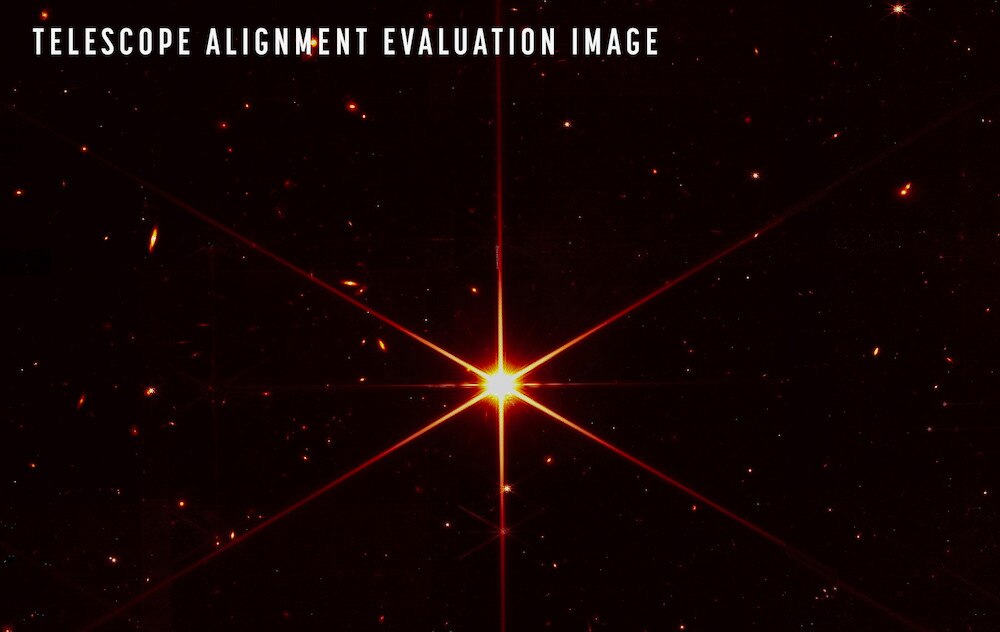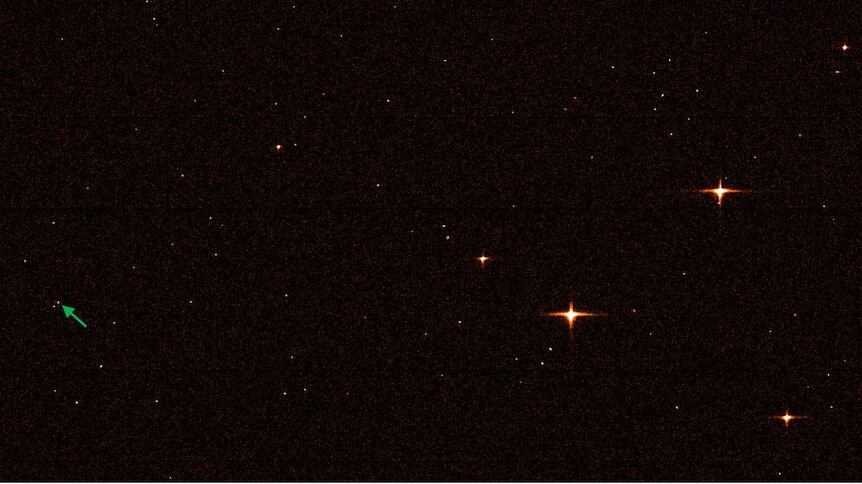Create a free profile to get unlimited access to exclusive videos, sweepstakes, and more!
Another big JWST milestone: The first deep, clear image, with galaxies galore
Dozens of distant galaxies seen in newly released James Webb Space Telescope image

The James Webb Space Telescope has reached a new milestone: “Fine-phasing” calibration is now complete, which means all 18 hexagonal submirrors are acting as a single unit, and are now focused and aimed perfectly at a single spot in one of JWST’s many scientific cameras. This is a critical step in a long path to having the giant telescope ready for scientific observations, which will start this summer.
To celebrate this achievement, the Space Telescope Science Institute — in charge of commissioning and daily operations of the observatory — released a wonderful new image.
WHOA.
There’s a lot going on here. The star in the center is called Gaia DR2 1441118830986575232, a very red star about 2,000 light years away.
Usually, the lines going through a star like those seen here — called diffraction spikes — are caused by light bending as it passes support structures holding up a secondary mirror in the telescope, which is what I assumed at first. But then my friend and astronomer Heidi Hammel set me straight:
So the six edges of the mirrors are what cause the diffraction. The horizontal line is an actual support structure diffraction spike, which makes sense to me: The light brightens and dims along the line, which is caused by constructive and destructive interference in the light, and that’s typical in that kind of spike.There are two other support structures, but they align with the edges of the hexagonal submirrors, so their spikes are mixed with the mirror edge spikes. These spikes are a little irritating scientifically, since bright spikes can obscure objects you might want to see, but they’re pretty.
But even cooler, you can see lots of other objects in the image! Several dozen background galaxies are scattered throughout the field of view, nearly all of which are too faint to have been clearly seen before. Another friend and astronomer, Grant Tremblay, found the brightish galaxy on the left in a database; it’s probably over 3 billion light years away!
From the ground, the star is so bright it swamps faint nearby objects, but JWST’s keen vision even now can separate them. There are also many very faint stars in the image as well.
Bear in mind this is not a science image. It’s a calibration image, taken in a single color, meant to test the ‘scope’s abilities and not analyze the objects in it for science.
However, this is a fully aligned image. What does that mean? The primary mirror of JWST is actually composed of 18 smaller hexagonal mirrors about 1.3 meters in size, arranged in a bigger hexagon that’s about 6.5 meters across. All 18 submirrors have to be incredibly well aligned, acting together to see the same object at the same time and focus its light as accurately as possible on the same spot on a detector.
In fact, the workhorse instrument on JWST is the Near Infrared Camera, or NIRCam. This is what’s being used to “see” the photons of light from the mirrors. Over the past few weeks, the mirrors have been painstakingly adjusted, first in a course phasing and now fine phasing, so that they all act together. This image shows the results.
But we’re nowhere near done. All 18 mirrors are now able to send light to a single spot on the camera. The next step is to make sure they can do this in different spots on the detector, so that everything in the field of view is as well focused as possible. And then this has to be done on the other JWST instruments: the Fine Guidance Sensors, the Near Infrared Spectrograph, and the Mid-Infrared Instrument. That will likely take many weeks, and then, after that, a final pass-through is done to make final corrections to the submirror pointings.
And then, and then, the gigantic observatory will be open for scientific business. That’s expected to happen early this summer.
And hey, here’s a little extra something you can have, as a treat: The Gaia astronomical observatory took an image of JWST from space:
WHOA AGAIN. Both Gaia and JWST orbit the Sun about 1.5 million kilometers farther out than Earth in a spot called the L2 point. Missions sent there actually orbit the L2 point in space in what’s called a Lissajous orbit. Gaia scans the whole sky, measuring the brightnesses, positions, and motions of over a billion stars with exquisite precision, and on Feb. 18, 2022, JWST happened to be in the part of the sky Gaia was observing. The two telescopes were a whopping one million kilometers apart — two and a half times the Earth-Moon distance — when this image was taken.
There’s no real science that can be done with this shot. It’s just a fun thing that happened to happen, and scientists are human too. We like to see our spacecraft from our spacecraft. Why? Because it’s cool.
That’s a pretty good reason. And stay tuned, because very, very much cooler things are coming soon.




























